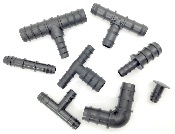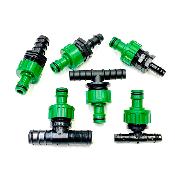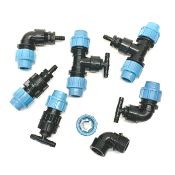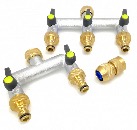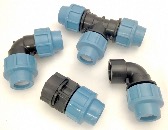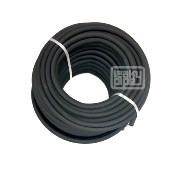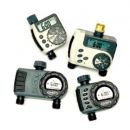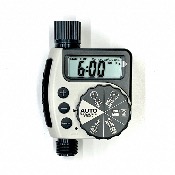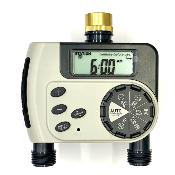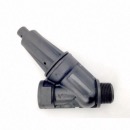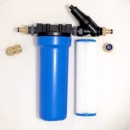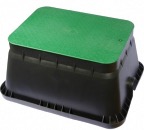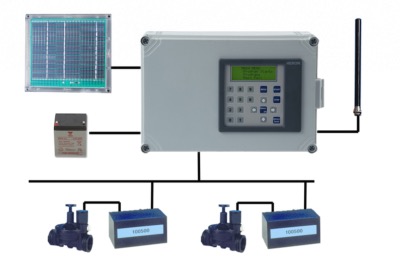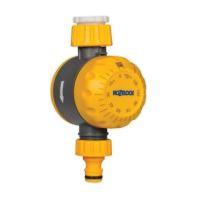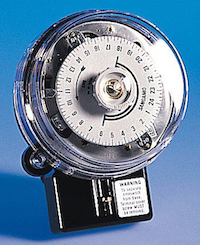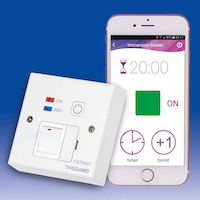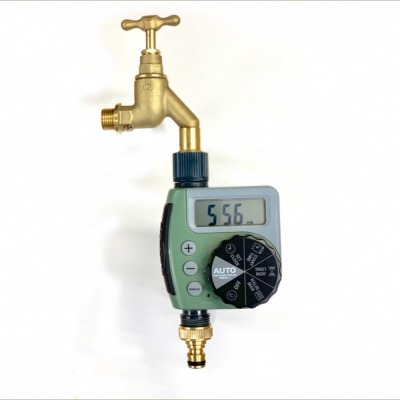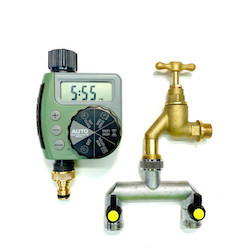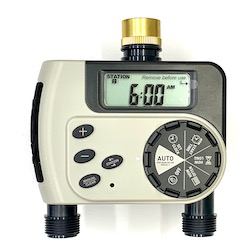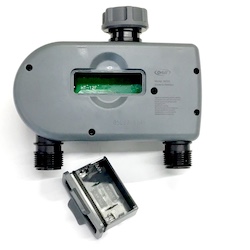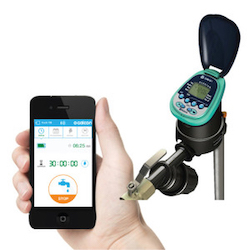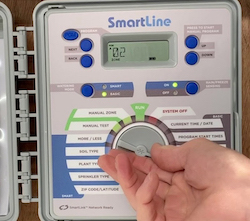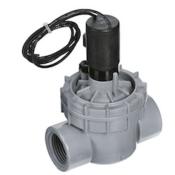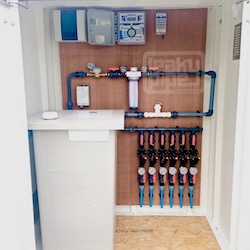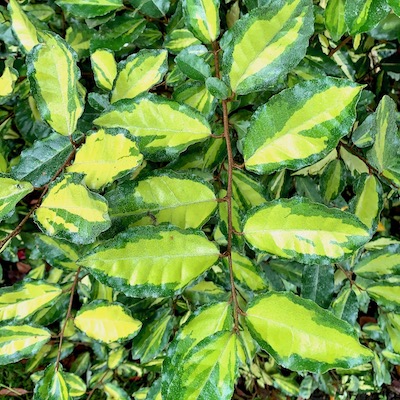Why choose an automatic irrigation system?How does “Automatic Irrigation Systems” sound to you? Clever? Futuristic? Expensive? To help you determine whether an automation irrigation system is right for your project, we detail in this guide the different options that are available to you and how they work. Firstly, let us look into the perception of the word “automatic” in the context of applying water to a subject. Some would maintain that “Automatic” should mean that there does not need to be any human intervention in the action of that device. Some would be happy for it to mean saving time, “Take the chore out of the watering: I’d like the plants to grow, look nice while I still have time to get on with other things”. The former case is a very high-end ideal to promise and may not even be practical for most situations. The latter is probably the most workable and currently, economically achievable without employing specialist contractors. In essence, any motivated, reasonably practical individual can assemble an automated watering technique that will do a regular job, allowing a predictable watering operation for a reasonable cost. In fact, compared to the cost of losing the investment when plants die, this level of system will pay for itself quickly. Often designed planting schemes will plan to overpopulate to allow for plant loss. We would say that it is worth cutting down on the number of plants needed for a new design and concentrate on making provisions to encourage for all of them to grow well, contrary to accepting a percentage of plant loss.
After all, this is not only a costly waste of plants, but a loss of time in producing soft landscape results, a loss to the habitat and therefore loss to the environment. If you agree, it is easy to justify simple, automated watering systems and reap the benefits without too much technology.
How does an automatic irrigation system work?Don't be put off by the photograph here! There are several different levels of automation that operate differently depending on the cost, functionality and ease-to-use. We detail below the main automatic systems that are of interest and share our advice to help you choose the right one to water your plants. Don't be frightened by the gear on the left. It's the sort of quipment you'd find on a Golf Course or an extensive irrigation system. It's definitely a professional installation required. 1. Countdown devices.Like a dial-up, sprung-loaded valve on the water supply that you select an amount of time for the valve to stay open, then it will shut. It won’t do anything after that point unless you reset it. These don’t need power & are old tech; but still available. They are very understandable and although basic, they do at least ensure that watering STOPS when it should. Because constant watering will cause waterlogging and plants will die this is critical. Overwatering kills as much as drought. 3. Battery-powered Timers for Garden Bibtaps,(faucets or “Brass taps”). These have become brilliant tools at a very cheap price. They have become more reliable in the last few years. They are generally designed to screw onto the normal UK garden tap, (without the need for tools or a specialist), crushing a rubber washer between the neck of the tap and the couple of the timer, (see our videos). The user can operate watering manually, (like a countback device) or quickly set a watering program and benefit from predictable watering without any further input from them. Yes, as ambients change, this may be a little too much or not quite enough, but at least something is happening without intervention. For the money and the savings on your water bill, what a bonus! More recently, tap-timers have extended to have two and even four outputs from the tap, each individually programmable and therefore, extending the value of the timer. Something to consider here: these items can get quite bulky as they get to an array of four outputs. They are plastic and the twisting forces that can be accidentally applied through output pipework and/or impact can shear the unit from the tap. With the incorporation of bluetooth and WiFi capability into some of these models, you can even get excited about “controlling” these from your smartphone, while you’re on the Beach in the Bahamas. Yet it may not be your priority. Remember, these are all built on a budget. What are your expectations? If those are reasonable, then there’s plenty of choice. You can add rain switches to interrupt watering if it rains as well as soil moisture sensor. This is a good idea if the sensor remains its integrity. But what happens when it doesn’t work the way you expect? Reliability, may be highest on your priority list? Please remember not to leave timers out in freezing conditions. Trapped water inside anything will tend to fracture. Causing a mess of unwanted “leakage” in the Spring when you want to get watering! These timers have a water pathway cleverly created from plastic parts. They’re not economically serviceable, so they need to be protected from the cold, especially windchill. Outside of these things, remember tap-timers are excellent devices, especially when teamed with trickle devices like LeakyPipe®. You can easily bring programmed watering to 300 meters of LeakyPipe® porous hose with a single timer. Twice that with a two-output timer. That can give you a large area of watering, with very little effort and expense. 4. Battery-Powered Programmable Solenoid Valves.These are similar to the above, but they are designed towards being plumbed into pipework rather than hanging from a tap. So, they are a bit more involved to incorporate into a watering system than those discussed above, however, there are benefits. The solenoid valve is bigger, therefore allows higher flow rates. The programming is similar to the above. One real bonus is that you can mount these valves discreetly, then, employing Bluetooth® again, you can remotely enquire and adjust the program from a few yards away. This can be very handy in the middle of a field where there’s no WiFi. We would say that these valves are not generally a “Garden” thing, more an “Estate” thing. Overall these provide excellent value. 5. Irrigation ControllersIn terms of complexity and installation these represent the next level. It isn’t difficult, but it is likely to be more unfamiliar. Immediately sounds too complicated? Well, this is not necessarily the case. There are a range of these throughout the World. Of course, these follow similar thinking and technology, but do come to the market in differing qualities. Here we’ll just outline the basics. The irrigation controller is positioned anywhere you’d like: inside, outside, you choose, but it needs to be wired to the single phase power supply (Don’t worry, they virtually use no electricity!). In the UK, they’ll be plugged into a normal socket, the plug top having a 3amp fuse. Or they can be wired into a 3amp fused spur. Either way, the power should be left on constantly. Inside the unit, there is a transformer that converts the power to 24VAC, which means you can safely run multi-core, telemetric cable, out into any site and connect remotely positioned solenoid valves (or arrays of valves), well-away from the controller. These valves are usually housed in sub-surface valve “boxes” that protect them and keep them hidden from sight and damage. Returning to the controller: Its job is to be a tactile interface for you to set-up your watering programs to many areas separately with just a few finger-presses. You may be creating one watering zone or you may have created 99 zones. Either way, you come to this one device to make changes. Yes, with some of these devices, you can access them through the internet, via WiFi or (if the latter is not available), via the GSM mobile 3,4,5G phone data signal service. Please note that these services do incur additional running costs. You can at this level add rain switches, and if you spend some more, you can add weather sensors. The latter help monitor the weather shifts, report them to the controller and then adjust the watering durations tomorrow, according to what has happened today! Remember, it’s a great idea & it does help water efficiency. But an amount of human overseeing will still be required and like many of these things, parameters must be understood and set correctly into the program. Note that all sensors will require attention. For many years, the irrigation industry has this as the solid basis of any system. It IS reliable. It is a bit specialist, but the good bit is that they are understandable and serviceable. But they do need planning as obstacles often block easy installation. If you are planning a new planting design, program in works to install the pipework for an irrigation system before the building of hard surfaces, walls, paths and so on. 6. Top-of-the-Range Control equipmentfrom manufacturers like Toro, Hunter, Weathermatic and Heron (UK) all have abilities to monitor the outward flow of water into the system. Some can hook-up to Computers and building BMS systems. As the number of zones rises, the cable changes to two-core that carries a digital signal and solenoid valves sit with “decoders” to which they are assigned. The sort of control that cut its teeth on applications such as Golf Courses. Needless to say, this requires a higher budget and is not for most DIY projects. All those automatic plant watering systems can be paired with drip irrigation systems, soaker hose systems and sprinkler systems. To Automate or not to Automate? Whatever your choice of automated irrigation system, there is definitely a good reason to justify the spending of time, imagination and money. Turning water on and even more importantly, reliably turning it off, will give you a better result at any level of investment. It’s not the only solution, but it is a big part of the road to success. Why use an Automatic LeakyPipe Watering SystemYou can see here a plethora of choices in automatic control equipment available on the Market. All have a place, and all are worthwhile. Pick according to the scale of your project, depending on the size of the Soft Landscaping and also of course your budget. Consider dividing your site into separate areas or zones according to aspect, types of planting, soil changes, or water source availability. A lawn will not need the same as a new avenue of trees, or a hedge, or a green roof, or an embankment. Indeed, a lawn may not need watering to survive. It’s not difficult but it may be unfamiliar ground.
LeakyPipe® porous hoses proved to be a long-term solution to efficient care for various types of projects. If in doubt, it is worth sitting down to view our design video to help think about this.
Our team is available if you wish to call us. We may know a Contractor in your area that could help you if it is too much for you to DIY.
When it comes to automatic watering Systems, remember that it’s not necessarily about the amount of water you apply, it’s more about where you reliably put it and that will be where the LeakyPipe® is!
|

